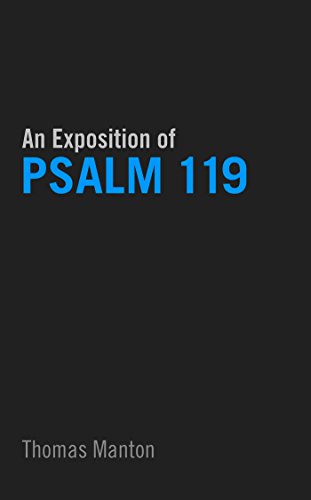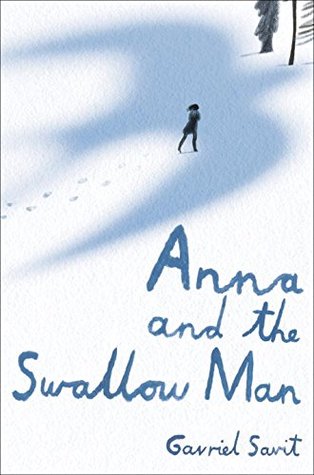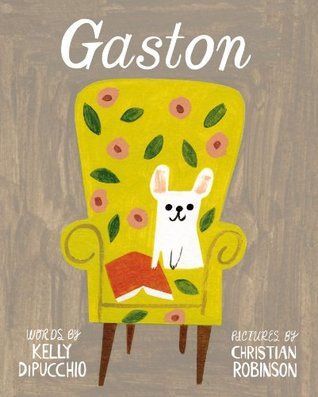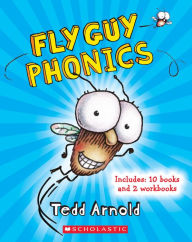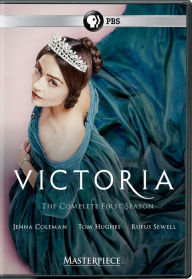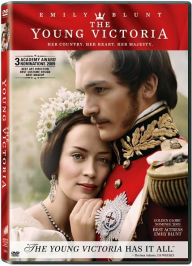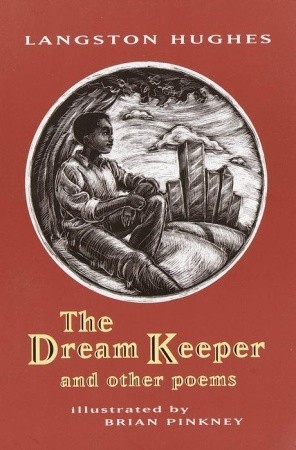Goin' Someplace Special. Patricia McKissack. Illustrated by Jerry Pinkney. 2001. 40 pages. [Source: Library]
Favorite early reader:
What This Story Needs Is a Munch and a Crunch. Emma J. Virjan. 2016. HarperCollins. 40 pages. [Source: Library]
Favorite early chapter book:
Pig & Goose and the First Day of Spring. Rebecca Bond. 2017. Charlesbridge. 48 pages. [Source: Library]
Favorite poetry:
The Dream Keeper and Other Poems. Langston Hughes. 1996. 96 pages. [Source: Library]
Favorite classic:
The Three Clerks. Anthony Trollope. 1858. 648 pages. [Source: Bought]
Favorite graphic novel:
Annie Sullivan and the Trials of Helen Keller. Joseph Lambert. 2012. 96 pages. [Source: Library]
Favorite nonfiction:
Gosnell: The Untold Story of America's Most Prolific Serial Killer. 2017. 347 pages. [Source: Library]
Favorite biography:
Joni: An Unforgettable Story. Joni Eareckson Tada. 1976. 205 pages. [Source: Bought]
Favorite christian nonfiction:
Surprised by Suffering. R.C. Sproul. 1994/2010. 214 pages. [Source: Bought]
Board books and picture books:
- Steppin' Out: Jaunty Rhymes for Playful Times. Lin Oliver. Illustrated by Tomie DePaola. 2017. 32 pages. [Source: Library]
- Suppose You Meet a Dinosaur: A First Book of Manners. Judy Sierra. Illustrated by Tim Bowers. 2012. Random House. 40 pages [Source: Review copy]
- Goin' Someplace Special. Patricia McKissack. Illustrated by Jerry Pinkney. 2001. 40 pages. [Source: Library]
- Quinoto's Neighborhood/El Vecindario de Quinito. Ina Cumpiano. Illustrated by Jose Ramirez. 2005/2009. 24 pages. [Source: Library]
- Rhyming Dust Bunnies. Jan Thomas. 2009. 40 pages. [Source: Review copy]
- Antoinette. Kelly DiPucchio. Illustrated by Christian Robinson. 2017. 40 pages. [Source: Review copy]
- Gaston. Kelly DiPucchio. Illustrated by Christian Robinson. 2014. 40 pages. [Source: Library]
- Thunder Cake. Patricia Polacco. 1997. 32 pages. [Source: Library]
- I Am Helen Keller. Brad Meltzer. Illustrated by Christopher Eliopoulos. 2015. 40 pages. [Source: Library]
- What This Story Needs Is A Pig in a Wig. Emma J. Virjan. 2015. HarperCollins. 40 pages. [Source: Library]
- What This Story Needs Is a Hush and a Shush. Emma J. Virjan. 2016. HarperCollins. 40 pages. [Source: Library]
- What This Story Needs Is a Munch and a Crunch. Emma J. Virjan. 2016. HarperCollins. 40 pages. [Source: Library]
- What This Story Needs Is a Bang and a Clang. Emma J. Virjan. 2017. HarperCollins. 40 pages. [Source: Library]
- Pig & Goose and the First Day of Spring. Rebecca Bond. 2017. Charlesbridge. 48 pages. [Source: Library]
- A Mystery Comes Knocking (Hamster Holmes) Albin Sadar. 2015. 32 pages. [Source: Library]
- Combing for Clues. (Hamster Holmes) Albin Sadar. Illustrated by Valerio Fabbretti. 2015. 32 pages. [Source: Library]
- On the Right Track (Hamster Holmes) Albin Sadar. Illustrated by Valerio Fabbretti. 2016. 32 pages. [Source: Library]
- Can You Guess My Name? Traditional Tales Around the World. Judy Sierra. Illustrated by Stefano Vitale. 2002. 128 pages. [Source: Library]
- The Adventures of Thor the Thunder God. Lise Lunge-Larsen. Illustrated by Jim Madsen. 2007. HMH. 80 pages. [Source: Library]
- Up and Down the River (Fairchild Family #3). Rebecca Caudill. Illustrated by Deci Merwin. 1951/2009. 143 pages. [Source: Library]
- Schoolroom in the Parlor (Fairchild Family #4) Rebecca Caudill. Illustrated by Decie Merwin. 1959. 145 pages. [Source: Library]
- Fly Guy Phonics. Tedd Arnold. 2017. Scholastic. [Source: Review copy]
- Wish. Barbara O'Connor. 2016. FSG. 240 pages. [Source: Library]
- The Magician's Nephew (Chronicles of Narnia #6) C.S. Lewis. 1955. 221 pages. [Source: Bought]
- Can You Guess My Name? Traditional Tales Around the World. Judy Sierra. Illustrated by Stefano Vitale. 2002. 128 pages. [Source: Library]
- The Adventures of Thor the Thunder God. Lise Lunge-Larsen. Illustrated by Jim Madsen. 2007. HMH. 80 pages. [Source: Library]
- Up and Down the River (Fairchild Family #3). Rebecca Caudill. Illustrated by Deci Merwin. 1951/2009. 143 pages. [Source: Library]
- Schoolroom in the Parlor (Fairchild Family #4) Rebecca Caudill. Illustrated by Decie Merwin. 1959. 145 pages. [Source: Library]
- Audacity Jones to the Rescue. Kirby Larson. 2016. Scholastic. 224 pages. [Source: Review copy]
- Anna and the Swallow Man. Gavriel Savit. 2016. 240 pages. [Source: Library]
- Headed for Home. Mary Helen Brown. 2016. 178 pages. [Source: Review copy]
- A Mystery Comes Knocking (Hamster Holmes) Albin Sadar. 2015. 32 pages. [Source: Library]
- Combing for Clues. (Hamster Holmes) Albin Sadar. Illustrated by Valerio Fabbretti. 2015. 32 pages. [Source: Library]
- On the Right Track (Hamster Holmes) Albin Sadar. Illustrated by Valerio Fabbretti. 2016. 32 pages. [Source: Library]
- The Three Clerks. Anthony Trollope. 1858. 648 pages. [Source: Bought]
- The Dream Keeper and Other Poems. Langston Hughes. 1996. 96 pages. [Source: Library]
- Washington Square. Henry James. 1880. 288 pages. [Source: Bought]
- Kolyma Tales. Varlam Shalamov. Translated by John Glad. 1978/1994. 508 pages. [Source: Library]
- The Magician's Nephew (Chronicles of Narnia #6) C.S. Lewis. 1955. 221 pages. [Source: Bought]
- Annie Sullivan and the Trials of Helen Keller. Joseph Lambert. 2012. 96 pages. [Source: Library]
- Gosnell: The Untold Story of America's Most Prolific Serial Killer. 2017. 347 pages. [Source: Library]
- I Am Helen Keller. Brad Meltzer. Illustrated by Christopher Eliopoulos. 2015. 40 pages. [Source: Library]
- The Magician's Nephew (Chronicles of Narnia #6) C.S. Lewis. 1955. 221 pages. [Source: Bought]
- Surprised by Suffering. R.C. Sproul. 1994/2010. 214 pages. [Source: Bought]
- Alive in Him: How Being Embraced by the Love of Christ Changes Everything. Gloria Furman. 2017. Crossway. 176 pages. [Source: Review copy]
- Abortion: A Rational Look at an Emotional Issue. R.C. Sproul. 1990/2010. 256 pages. [Source: Bought]
- Joni: An Unforgettable Story. Joni Eareckson Tada. 1976. 205 pages. [Source: Bought]
- Here I Stand. A Life of Martin Luther. Roland H. Bainton. 1950. 336 pages. [Source: Bought]
- Pursuit of God Bible -- NIV. 2013. 1587 pages. [Source: Gift]
- The Work of Christ: What the Events of Jesus' Life Mean For You. R.C. Sproul. 2012. 224 pages. [Source: Bought]
- The Cross of Jesus: What His Words From Calvary Mean for Us. Warren Wiersbe. 1997. 144 pages. [Source: Bought]
- The God I Love. Joni Eareckson Tada. 2003. 368 pages. [Source: Bought]
- Unveiled Hope: Eternal Encouragement from the Book of Revelation. 1997. 244 pages. [Source: Borrowed]
- Martin Luther In His Own Words. Jack D. Kilcrease and Erwin Lutzer, editors. 2017. Baker Books. 176 pages. [Source: Review copy]
© 2017 Becky Laney of Becky's Book Reviews












